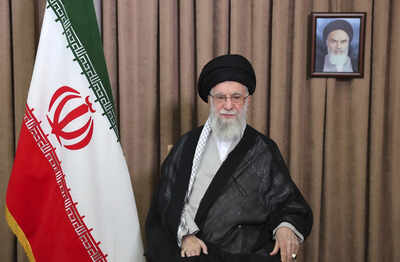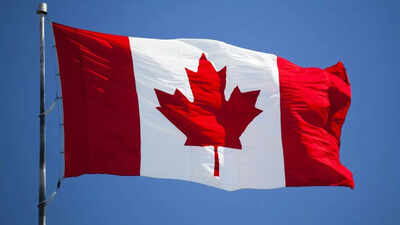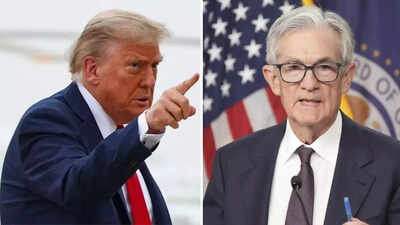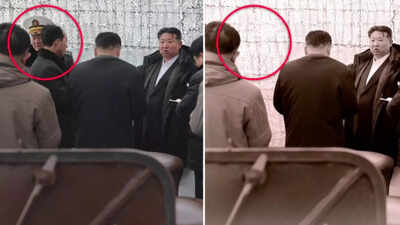Israel pounds Iran: Ayatollah on the brink – will Khamenei’s regime implode?

Iran’s regime is under siege – externally by Israeli airstrikes, internally by distrust and disillusion. The question gripping foreign capitals and Iranian streets alike: is Supreme Leader Ayatollah Ali Khamenei’s Islamic Republic on the brink of implosion?Israel’s military campaign has wiped out much of Iran’s top brass, exposed its intelligence vulnerabilities, and thrown its nuclear program into disarray. For Khamenei, now 86, it’s a historic crisis – not just of power, but of survival.Why it matters
- Iran is not just a state. It’s a theocratic fortress built to endure external assault. Yet today, it faces something deeper: elite betrayal, popular rage, and the erosion of its own pillars – the Revolutionary Guards, internal unity, and divine legitimacy.
- In recent days, the Israeli campaign, dubbed “Rising Lion,” has achieved what few believed possible. Multiple Iranian generals, including Hossein Salami, Amir Ali Hajizadeh, and spymaster Mohammad Kazemi-all part of Khamenei’s closest military brain trust-were eliminated in precision strikes. These killings have left “major holes in his inner circle and raised the risk of strategic miscalculations.”
- On June 16, Israel claimed “full air supremacy over Tehran.” Images of empty highways, shuttered shops, and civilians fleeing the capital flooded social media. Barbeque emojis mock dead generals. Others circulate maps of Tehran neighborhoods prepped for evacuation. Still, the regime insists: business as usual.
- “Iran’s default is to defy aggressors, not to capitulate,” the Economist observed. That instinct may again help it survive – or provoke its collapse.
What’s happening
- Khamenei’s inner circle has been decimated: Israeli airstrikes have killed most of his senior military advisers, including Hossein Salami (IRGC commander), Amir Ali Hajizadeh (aerospace chief), and Mohammad Kazemi (spymaster).
- “Extremely dangerous,” said one source close to Khamenei’s decision-making process. Strategic miscalculations are now far more likely.
- Missile strikes and sabotage are ongoing: Iran has launched more than 400 missiles at Israel – most intercepted. Israeli strikes have hit the Natanz and Arak nuclear facilities and reportedly damaged underground enrichment halls. The Fordow facility, dug deep into a mountain, remains a flashpoint.
- Popular rage simmers, but fear dominates: Social media cheers dead generals. Young Iranians call them “enemies of the people.” But protest movements are leaderless, fractured, and burned by past crackdowns. As the Economist puts it: “The regime might be weak, but its people are weaker.”
- Khamenei’s son is stepping in: Mojtaba Khamenei, a mid-level cleric with deep IRGC ties, is quietly consolidating power. He’s seen as a potential successor, endorsed even by some reformists like Faezeh Hashemi Rafsanjani. That’s less a sign of support than resignation: Mojtaba is the regime’s best bet for continuity – or its softest landing.
Signs of a crumbling regime
- Loyalty is cracking: Israel’s ability to assassinate commanders in their homes suggests high-level leaks. Cronyism, paranoia, and mistrust now infect decision-making.
- Military doctrine is failing: “A paper cat,” one Tehran stockbroker said of Iran’s vaunted missile forces. No sirens warn civilians. No credible defense is in place.
- Street sentiment is shifting: After the assassination of Hajizadeh – responsible for downing a Ukrainian airliner in 2020 – online celebrations were widespread. Some Iranians draped themselves in Israeli flags.
- But beneath the mockery lies fear. Tehran residents queue for fuel. Others flee to the countryside. The regime’s response? Rationing petrol and cutting social media access.
A regime conditioned to surviveIf history is any guide, military humiliation rarely spells the end for Iran’s rulers. The Iran-Iraq war (1980–1988), launched when Saddam Hussein saw the revolutionary regime as vulnerable, instead fortified the clerical state and birthed the Islamic Revolutionary Guard Corps (IRGC) as a power unto itself.Likewise, Israel’s campaign, while dazzling in its intelligence penetration and tactical success, may yet provoke a counterforce: nationalism.“Iran’s default is to defy aggressors, not to capitulate,” the Economist noted. Khamenei’s response to the June 13 killing of Hajizadeh was not remorse but wrath. “We will show them no mercy,” he declared. Though aged and isolated, he remains “extremely stubborn but also extremely cautious,” said Alex Vatanka of the Middle East Institute.Within 18 hours of the first strikes, a new layer of IRGC commanders had fired off hundreds of retaliatory missiles-mostly intercepted, but symbolically vital. The regime had not surrendered. It had reloaded.Between the lines
- Khamenei has faced protest waves before – 1999, 2009, 2022 – and crushed them with force. But this time is different. The military isn’t just challenged. It’s hollowed out.
- Worse, Khamenei is isolated. Trusted confidants are dead. His son is viewed as opportunistic. And his allies in the “Axis of Resistance” – from Syria to Hezbollah – are either overthrown or weakened.
- “We are not going to take him out (kill!), at least not for now,” Trump wrote, referring to Khamenei – while demanding Iran’s “unconditional surrender.”
- Despite his public rage, Khamenei’s calculus hasn’t changed: regime survival at all costs. “He is extremely stubborn but also extremely cautious,” Alex Vatanka of the Middle East Institute told Reuters. That’s how he’s lasted since 1989.
I may do it, I may not do it. I mean, nobody knows what I’m going to do. I can tell you this, that Iran’s got a lot of trouble, and they want to negotiate. The next week is going to be very big.
US President Donald Trump
Scenarios ahead
- Collapse from within: Continued strikes, elite defections, and mounting protests could implode the regime. Unlikely – but no longer unthinkable.
- Militarized succession: If Khamenei dies or steps down, Mojtaba may inherit power – with the IRGC as kingmaker. Think Saudi-style modernization with Shia theocracy intact.
- Rally-round-the-flag effect: Prolonged war could trigger patriotism, especially if civilians suffer heavily. Israel’s campaign might backfire, uniting Iranians behind a battered regime.
- Forever war: As Foreign Policy noted, “The war may never formally end.” Instead, Iran may strike in waves, rebuild clandestinely, and bleed its enemies through proxies.
Israel’s gamble: Collapse or conflagration?Israeli Prime Minister Benjamin Netanyahu has made no secret of his strategy. This is not just about destroying Fordow or Natanz. As Peter Beaumont of Tthe Guardian noted, “Netanyahu speaks of regime change in Iran; what he means is regime destruction.”Israel has disabled Iran’s air defenses, obliterated key military sites, and wiped out much of its nuclear command structure. But whether this paves the way for a stable transition-or a violent, region-spanning disaster-remains unclear.Even Netanyahu’s allies admit the limits of what can be achieved through force. “The protest movement lacks a leader or a common agenda,” said one Israeli security official. “You can create a vacuum. You can’t control what fills it.”And Iran is not without options. As Foreign Policy pointed out, “Tehran could seek to engage in a war of attrition, exhausting its adversaries’ will or capacity to fight.” It can still call on proxies, pursue clandestine nuclear development, or even escalate cyberattacks and terror strikes abroad.(With inputs from agencies)




